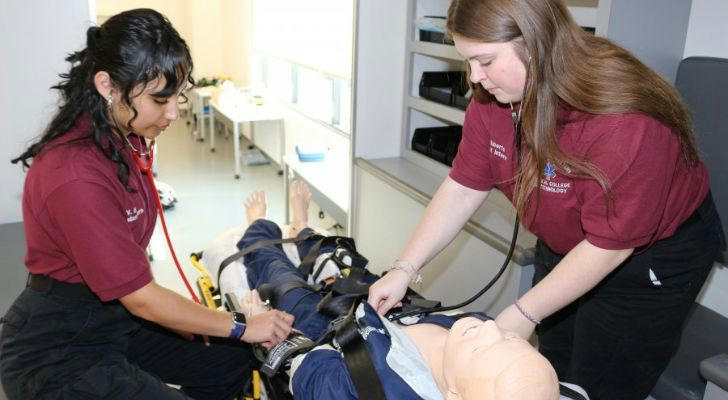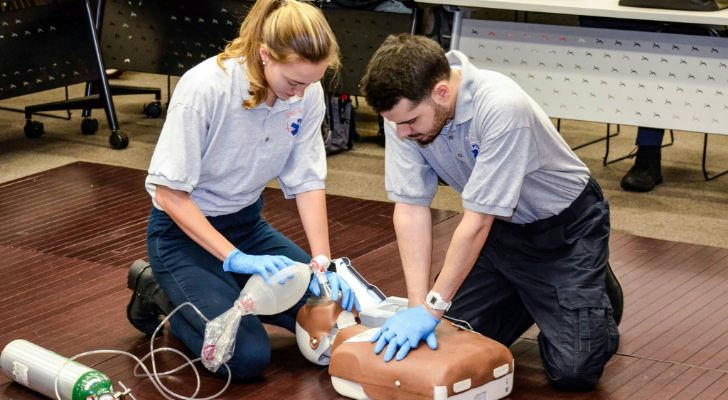Emergency Medical Technicians: Critical Skills for Life-Saving Care
Emergency Medical Technicians (EMTs) play a vital role in saving lives during medical emergencies. With the right training, EMTs are equipped to assess and stabilize patients in critical situations, providing care that can mean the difference between life and death. From heart attacks to car accidents, EMTs are often the first responders to emergencies, delivering essential medical care before patients reach the hospital.
Let’s explore the key responsibilities and skills of EMTs, as well as the training required to excel in this life-saving profession.

Why EMTs Are Essential
Providing Critical Care in Emergencies
EMTs are often the first healthcare professionals to arrive at the scene of an emergency. Their role is to quickly assess the patient's condition, provide immediate medical treatment, and transport them to a medical facility if necessary. The care provided during the first few minutes of an emergency is crucial and can significantly improve the patient's chances of survival.
Whether it's administering CPR, stopping bleeding, or providing oxygen therapy, EMTs are trained to handle a wide range of medical emergencies with calm and expertise.
Ensuring Timely Medical Intervention
Quick and efficient medical intervention is key to saving lives. EMTs are trained to make rapid decisions in high-pressure situations. They assess patients' vital signs, administer medications, and manage airway and breathing issues, all while ensuring that the patient is safely transported to the hospital or trauma center for further care.
Timely intervention by EMTs can help prevent complications such as brain damage, organ failure, or even death, ensuring patients receive the medical attention they need as soon as possible.

Key Responsibilities of an EMT
Responding to Medical Emergencies
EMTs respond to a variety of medical emergencies, including but not limited to:
• Cardiac Arrest: Performing CPR and using defibrillators to revive patients who experience a sudden cardiac arrest.
• Trauma Care: Stabilizing patients with traumatic injuries from car accidents, falls, or other accidents.
• Respiratory Emergencies: Providing oxygen therapy and assisting with breathing difficulties.
• Chronic Medical Conditions: Managing patients with conditions such as asthma, diabetes, or seizures until further medical help arrives.
EMTs must be prepared to handle a wide range of medical conditions and act quickly to stabilize patients before they are transported to a medical facility.
Assessing and Monitoring Patients
One of the key responsibilities of an EMT is to assess patients' medical conditions and monitor their vital signs. This includes checking:
• Heart Rate and Blood Pressure: To monitor the patient’s cardiovascular health.
• Respiratory Rate and Oxygen Levels: To determine if the patient is experiencing breathing difficulties.
• Level of Consciousness: To assess the patient's mental status and neurological function.
EMTs must be able to quickly interpret these vital signs to determine the severity of the emergency and administer the appropriate care.
Providing Pre-Hospital Care and Transport
EMTs provide a range of medical treatments in the field, including administering medications (e.g., pain relief or anti-seizure drugs), controlling bleeding, and supporting patients with immobilization devices. Once the patient is stabilized, they are safely transported to a hospital or trauma center.
During transport, EMTs continue to monitor the patient’s condition and make any necessary adjustments to treatment, ensuring that the patient receives continuous care until they reach a medical facility.
Essential Skills for EMTs
Quick Decision Making
EMTs must make rapid, accurate decisions in high-stress situations. They need to assess the patient's condition quickly, prioritize care, and take action with minimal delay. Their ability to stay calm under pressure can make a significant difference in patient outcomes.
Strong Communication
Clear and concise communication is crucial in emergency medical situations. EMTs must communicate effectively with patients, bystanders, and other medical personnel, providing vital information about the patient’s condition and care plan. They must also document everything they do, ensuring that doctors and nurses have all the necessary information when the patient arrives at the hospital.
Physical and Mental Stamina
EMTs often work long shifts in physically demanding and emotionally taxing environments. They must be physically fit to lift and carry patients, as well as mentally prepared to deal with stressful, high-pressure situations. The ability to stay focused and compassionate in these challenging environments is essential for providing effective patient care.
Technical Proficiency
EMTs must be proficient with various medical equipment, such as defibrillators, oxygen tanks, and trauma care tools. They must also stay updated on the latest medical protocols and treatments to ensure they provide the best care possible in emergency situations.
Steps to Become an EMT
Complete EMT Training: Most EMTs are required to complete a formal training program, which includes both classroom instruction and hands-on clinical experience. Training typically lasts several months.
Pass Certification Exams: After completing training, aspiring EMTs must pass a certification exam to become licensed in their state or country.
Gain Experience: EMTs often start in entry-level positions and gain experience through fieldwork and continuing education.
Stay Updated: EMTs must regularly update their skills and certifications through continuing education courses to stay current with new medical techniques and equipment.
Final Thoughts
EMTs are an integral part of the healthcare system, providing essential care during emergencies and saving lives. With the right training, skills, and dedication, EMTs make a significant impact on patient outcomes, often serving as the first step in the medical care process.
Supporting Data and Industry Insights
Impact of Timely Intervention: Studies show that timely intervention by EMTs during cardiac arrest increases survival rates by up to 40%.
Employment Growth: The demand for EMTs is expected to grow by 6% from 2021 to 2031, driven by the need for emergency medical services in communities across the world.
Emergency Medical Services: Research indicates that over 30 million emergency medical calls are made annually in the United States alone, highlighting the critical role of EMTs in public health.
Becoming an EMT is a challenging yet rewarding career that offers the chance to make a real difference in people’s lives. If you’re passionate about helping others in their time of need, this career path could be the perfect fit for you!
